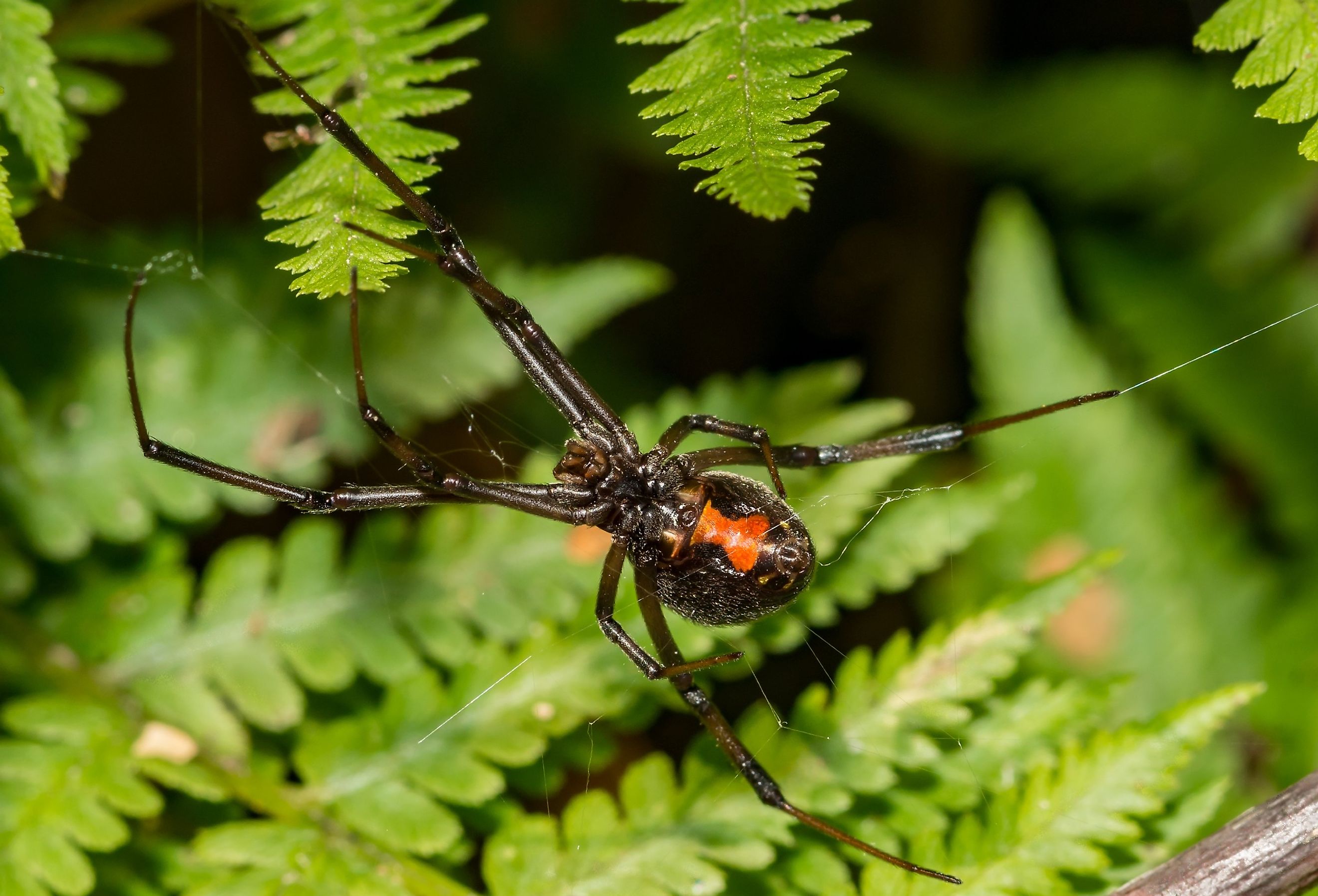
6 Most Venomous Spiders in Oklahoma
The US state of Oklahoma is nicknamed the Sooner State, thanks to the settlers who poured into the state before the nearly 2 million acres of land opened for settlement by the US Government. These early bird settlers, known as “Sooners,” arrived in Oklahoma during the 1889 Land Rush, specifically on April 22, 1889.
Bordered by Texas, Kansas, Missouri, Arkansas, and New Mexico, Colorado at the Oklahoma Panhandle, Oklahoma’s flat rural landscape is well-suited for various spiders. Thanks to its variety of ecosystems, like forests, grasslands, and wetlands, it is a state where these species thrive.
Many spiders call the state home attracted by its warm climate, which helps them hunt for prey and reproduce. Among these, only two species are particularly venomous: the brown recluse and the black widow spiders.
Brown Recluse Spider (Loxosceles reclusa)
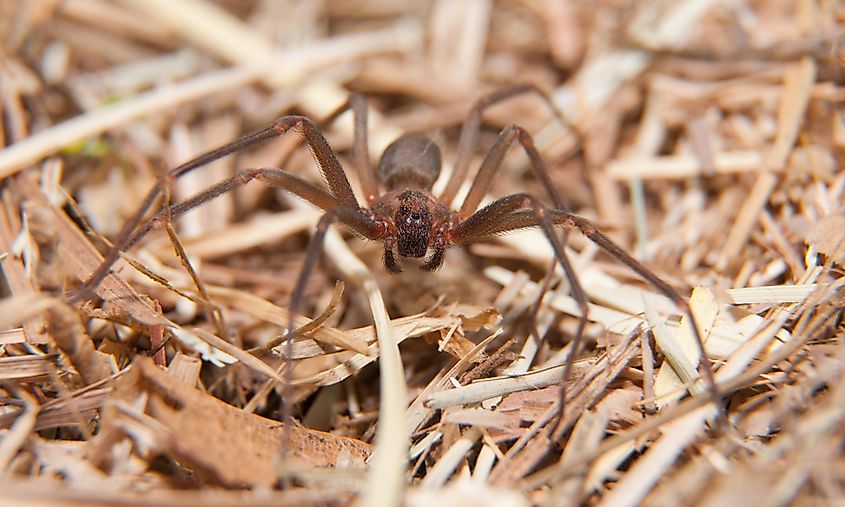
The brown recluse (Loxosceles reclusa) is one of the most well-known venomous spiders in the state. If it looks like the brown recluse can play the violin, due to its violin shape and marking on the top of its head, it can’t, but its bite can result in seizures, kidney failure, and, in some cases, death.
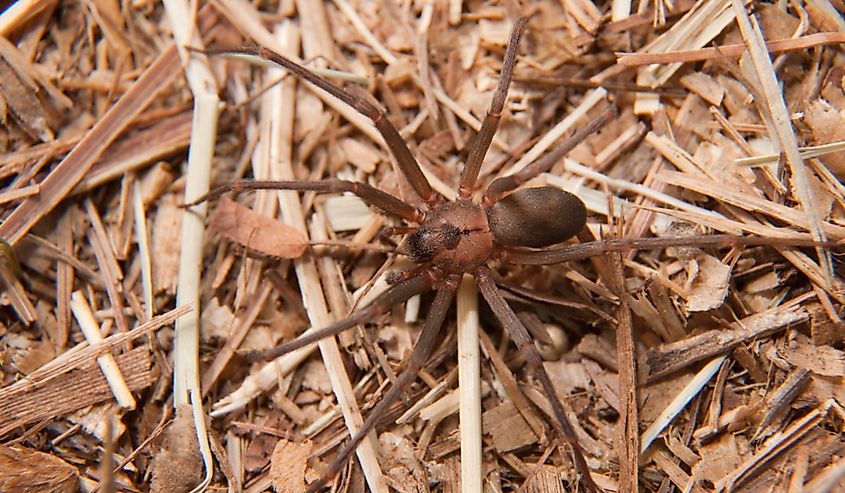
One of the most distinctive characteristics of the brown recluse is that it only has six eyes instead of eight, like most spiders. The brown recluse gets its name from its color and demeanor—it’s shy. During winter, brown recluses will head indoors to search for food and warmth, drawn to areas like attics and basements with undisturbed boxes and furniture.
Southern Black Widow Spider (Latrodectus mactans)
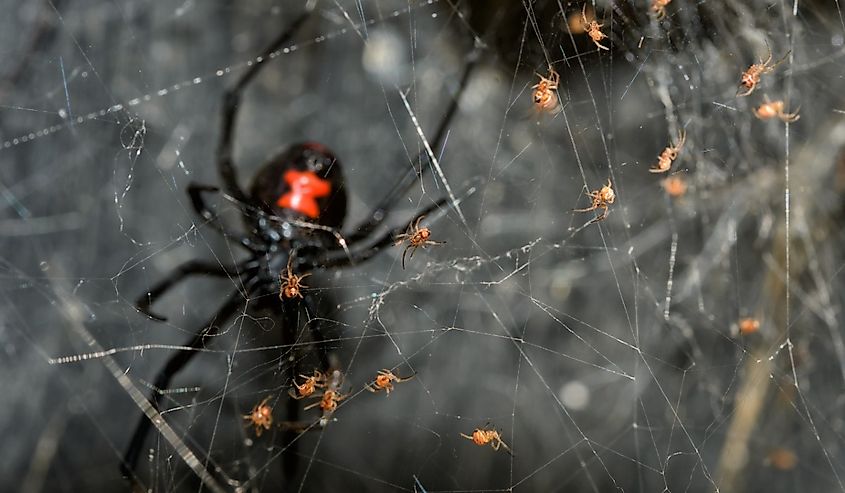
Southern black widow spiders (Latrodectus mactans) are found in Oklahoma. In the world of arachnids, female black widows get all the glory. They are associated with the "femme fatale" trope throughout pop culture, literature, and mythology, with the enduring myth that the female always kills and eats the male after mating.
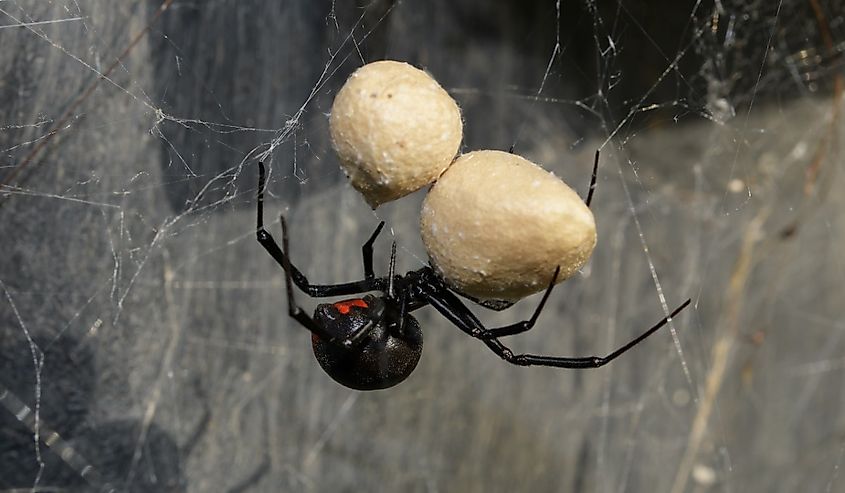
Female southern black widows are shiny black spiders, easily identified by a bright red hourglass shape on the underside of their abdomen. The spiders are known for their potent venom, which contains a neurotoxin called latrotoxin, which can cause pain, muscle cramps, and nausea in humans. Bites are rarely fatal, as antivenom treatments are available. Male black widows tend to be brown or grey with tiny red spots, and they are not a threat to humans as they rarely bite and they have smaller venom glands.
Texas Brown Tarantula (Aphonopelma hentzi)
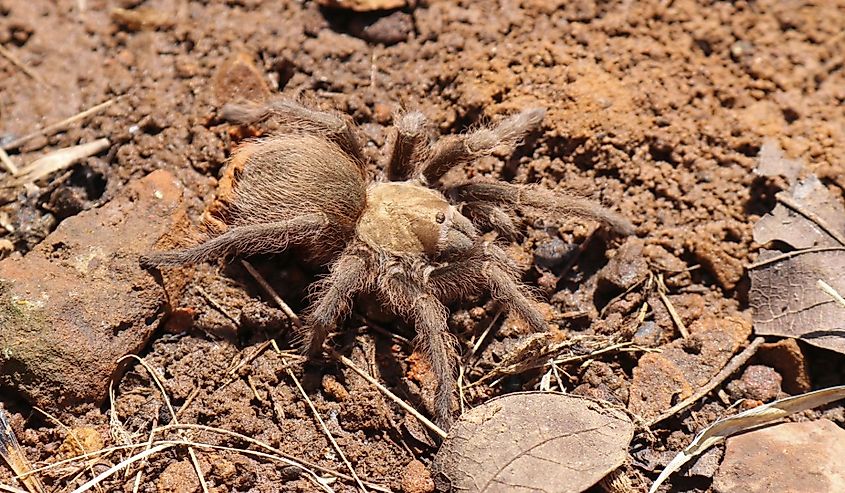
The Texas Brown Tarantula (Aphonopelma hentzi), also known as the Oklahoma Brown or Missouri Tarantula, is endemic to the southern United States. Large and intimidating, they can grow to leg spans over 4 inches long and weigh more than 3 ounces.
They are dark brown but can have reddish-brown or tan legs and abdomens, making them excellent at camouflaging in grasslands and deserts. A female Texas brown can lay up to 1,000 eggs, which she will guard until they hatch in 45 to 60 days. Tarantulas are generally not harmful to humans, except in the case of an allergic reaction. Their venom is mild, and their bites resemble a bee sting.
Wolf Spider (Lycosidae family)
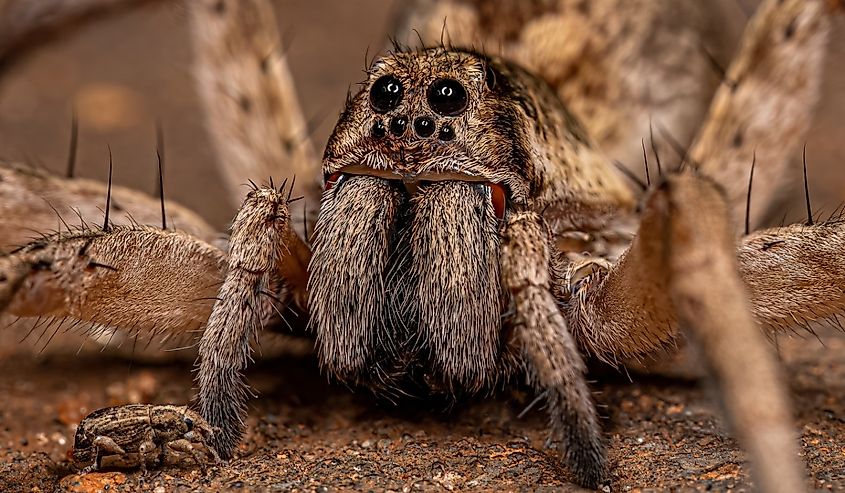
These large, fast-moving spiders are found throughout Oklahoma, and they get their name from how they hunt their prey, like wolves. Unlike most spiders, they do not build webs to catch their prey per se, but they do spin silk for egg sacs and burrow linings, not for trapping food.
Instead, wolf spiders (Lycosidae family) prefer to stalk their prey, ants, cockroaches, and bedbugs, at night in the dark. Although they are venomous, their venom is not dangerous to humans. Wolf spiders will only bite if they feel trapped, but their bites can be painful.
Yellow Sac Spider (Cheiracanthium inclusum)
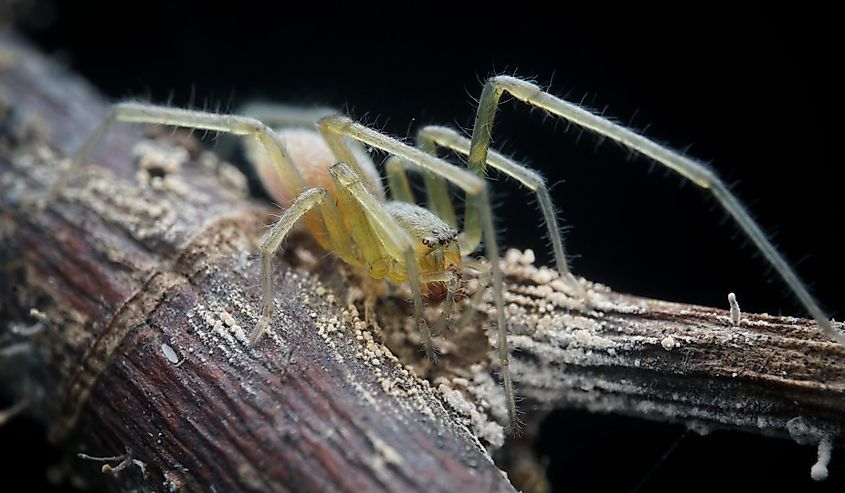
This albino-looking spider is commonly found indoors, high up on walls and ceilings, often in tiny silken sacs like the corners of walls. The spider’s name comes from its pale yellow to light beige color, but it can change colors slightly to reflect the color of its most recently-consumed insect. Yellow sacs (Cheiracanthium inclusum) are distinguishable from many other arachnids by the black tips of their legs, which is hair that helps them scale walls and trees. They do not spin webs.
Most bites from yellow sacs occur accidentally when trapped between a person’s skin and bed sheets, clothes, or shoes. Their bites can be painful and mildly necrotic, meaning the venom will kill skin tissue. Most individuals will have a mild reaction, such as swelling, burning, redness, and itching.
Woodlouse Spider (Dysdera crocata)
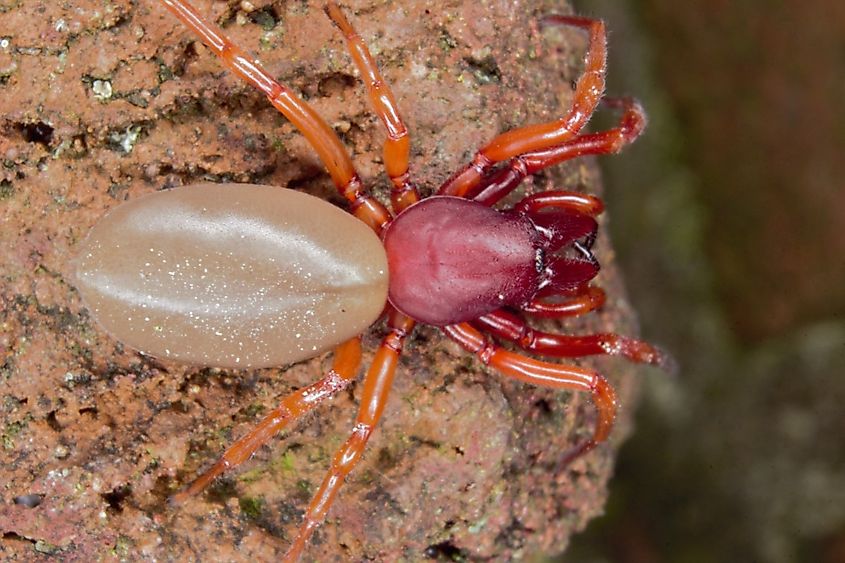
Known for preying on woodlice, these spiders can bite if provoked. Woodlouse spiders (Dysdera crocata) are named after their favorite food source and are identified by a dark red or orange body and a grayish-white abdomen. They have six eyes tightly clumped together and long fangs that are handy when deterring predators and capturing prey. Their venom is not harmful to humans, but their fangs can cause a painful bite.
Oklahoma is home to various species of spiders, with many living in residential areas of larger metropolitan areas like Tulsa and Oklahoma City and the rural regions across much of the state. The brown recluse and the black widow are the most venomous, with bites that can cause serious health issues, though fatalities are rare. Non-lethal species to watch out for include the Texas brown tarantula, wolf spider, yellow sac spider, and woodlouse spider.











